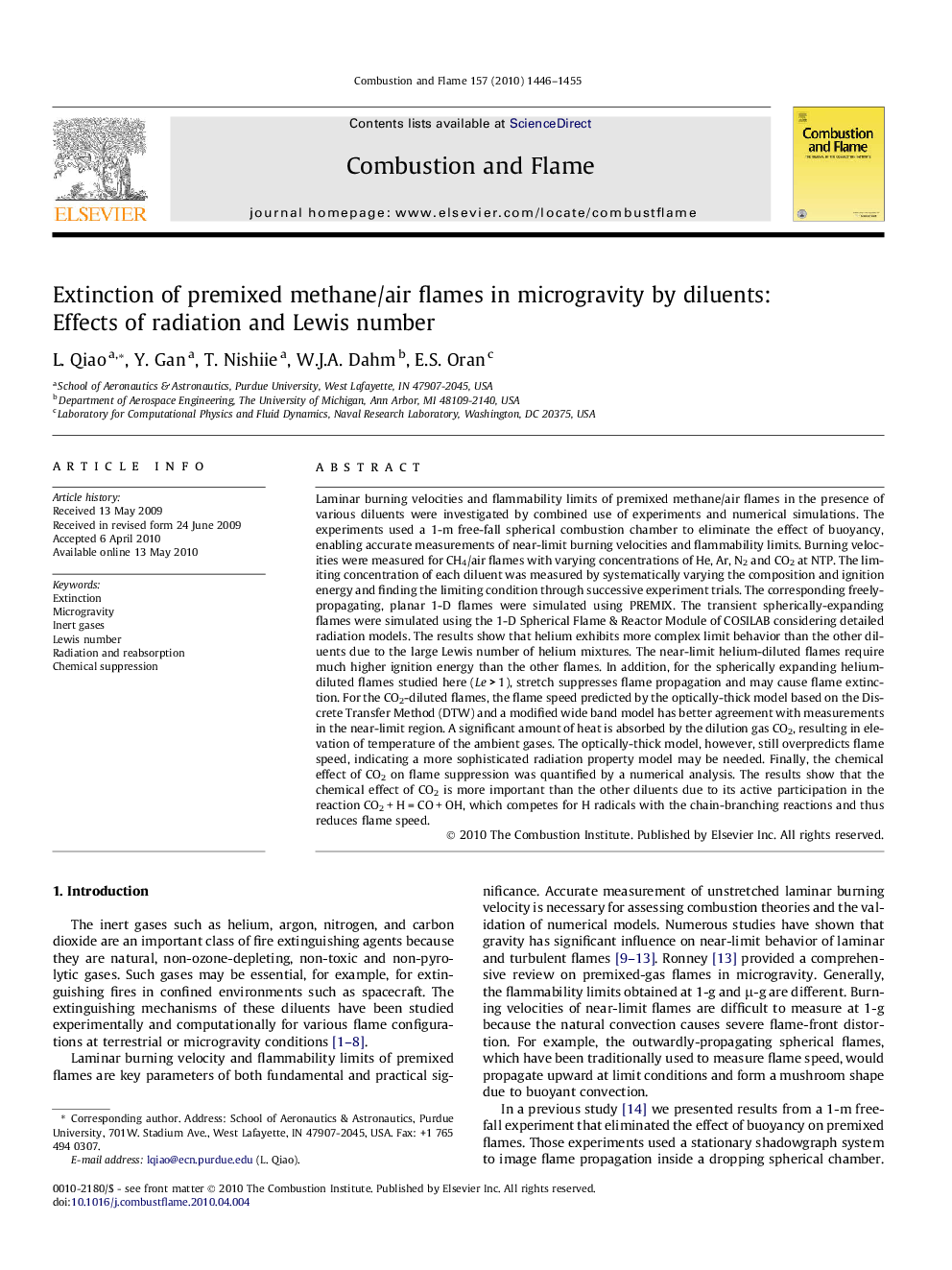| کد مقاله | کد نشریه | سال انتشار | مقاله انگلیسی | نسخه تمام متن |
|---|---|---|---|---|
| 166695 | 457808 | 2010 | 10 صفحه PDF | دانلود رایگان |

Laminar burning velocities and flammability limits of premixed methane/air flames in the presence of various diluents were investigated by combined use of experiments and numerical simulations. The experiments used a 1-m free-fall spherical combustion chamber to eliminate the effect of buoyancy, enabling accurate measurements of near-limit burning velocities and flammability limits. Burning velocities were measured for CH4/air flames with varying concentrations of He, Ar, N2 and CO2 at NTP. The limiting concentration of each diluent was measured by systematically varying the composition and ignition energy and finding the limiting condition through successive experiment trials. The corresponding freely-propagating, planar 1-D flames were simulated using PREMIX. The transient spherically-expanding flames were simulated using the 1-D Spherical Flame & Reactor Module of COSILAB considering detailed radiation models. The results show that helium exhibits more complex limit behavior than the other diluents due to the large Lewis number of helium mixtures. The near-limit helium-diluted flames require much higher ignition energy than the other flames. In addition, for the spherically expanding helium-diluted flames studied here (Le > 1), stretch suppresses flame propagation and may cause flame extinction. For the CO2-diluted flames, the flame speed predicted by the optically-thick model based on the Discrete Transfer Method (DTW) and a modified wide band model has better agreement with measurements in the near-limit region. A significant amount of heat is absorbed by the dilution gas CO2, resulting in elevation of temperature of the ambient gases. The optically-thick model, however, still overpredicts flame speed, indicating a more sophisticated radiation property model may be needed. Finally, the chemical effect of CO2 on flame suppression was quantified by a numerical analysis. The results show that the chemical effect of CO2 is more important than the other diluents due to its active participation in the reaction CO2 + H = CO + OH, which competes for H radicals with the chain-branching reactions and thus reduces flame speed.
Journal: Combustion and Flame - Volume 157, Issue 8, August 2010, Pages 1446–1455